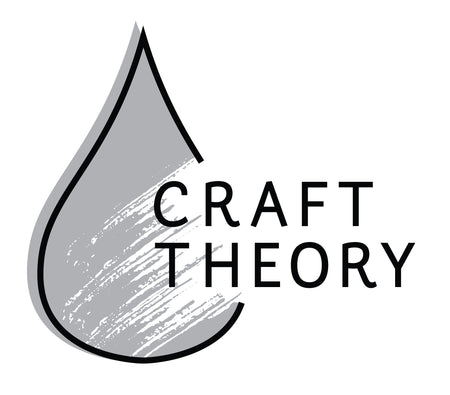*We're trying out some affiliate links as we do more blogging. If you click on one and choose to purchase we may receive a small commission at no charge to you.
We’re starting a new series on the Craft Theory blog where we’ll be talking about different artists, both past and present. I hope to highlight some of the differences and similarities as well as show you what makes each artist unique. So, here is everything you need to know about Wassily Kandinsky!
 Although he studied art as a child Kandinsky went to college at the University of Moscow where he majored in law and economics. His parents had pushed him to become a lawyer instead of an artist as it tended to be a more lucrative career. However at the age of 33 Kandinsky turned down an appointment as Professor to the Department of Law at Derpt University to focus solely on painting.
Although he studied art as a child Kandinsky went to college at the University of Moscow where he majored in law and economics. His parents had pushed him to become a lawyer instead of an artist as it tended to be a more lucrative career. However at the age of 33 Kandinsky turned down an appointment as Professor to the Department of Law at Derpt University to focus solely on painting.
He attempted to go back to art school but found that it wasn’t satisfying his needs. He later wrote, “quite often I yielded to a temptation to play truant and to go with a painter’s case to Shvabing, to Englishen-Garten, or to the parks on the Isar.
Kandinsky found that he was much like many artists in that he could not sit still and focus on only one craft. He formed several art groups, started a school, published letters in magazines, and wrote a book. His book “Concerning the Spiritual in Art” was published in 1912 and it became the first theoretical foundation of abstractionism. In his book he proclaims that the creative process of art is really the process of “self-expression and self-development of spirit”.

Moscow, Red Square, 1916
Because of his art, and many of his theories, Kandinsky is credited with being one of the pioneers of abstraction in Western art. He had also been fascinated with color symbolism and art psychology from an early age.
In 1914 Kandinsky fled Germany where he had been living for many years. He moved to Switzerland and then Moscow to escape the first World War and continued working on several more books. During this time he also started merging his abstract works with impressionist landscapes and romantic fantasies.
Kandinsky did return to Germany and start a new school house where he and other artists held free painting classes. In this period he experimented with many romantic ideas and synthesis as well as fantastic symbolical images. Unfortunately in 1931 national socialists started a large scale campaign against Bauhaus where Kandinsky was teaching and painting. When it closed in 1932 Kandinsky emigrated to France. Many of his almost 500 paintings in Germany between 1926 and 1933 were lost due to the Nazis declaring them “degenerate”.

Composition VIII, 1923
Kandinsky was fairly isolated in France because the Parisian artistic community did not readily accept abstract painting. He also had not formed friendships with many of his foreign colleagues, preferring to socialize with old friends.
Even so, he kept painting and experimenting. He formed a theory that, ”abstract art places a new world, which on the surface has nothing to do with "reality," next to the "real" world”. In his art you will find his inner world as well as many symbolic ideas.

Dominant Curve, 1936
Kandinsky had Chromesthesia which meant that he was able to hear sounds when he painted with colors. He once stated that "Colour is the keyboard, the eyes are the hammers, the soul is the piano with many strings. The artist is the hand which plays, touching one key or another, to cause vibrations in the soul”. He noted that, “yellow is the color of middle C on a brassy trumpet; black is the colour of closure, and the end of things; and that combinations of colours produce vibrational frequencies, akin to chords played on a piano”.
This is absolutely fascinating to me as many of the colors/sounds he associates together have very similar representations within color psychology. That however is a whole different blog!
Kandinsky eventually passed in 1944, just three days shy of his 78th birthday.
I encourage you to continue learning and experimenting just like Kandinsky did. Here are a few ways that we explored Kandinsky’s art in our homeschool art classes.
- Recreated his famous Concentric Circles painting
- Played with points and lines using several different mediums
- Recreated our own Moscow Red Square paintings with our favorite skylines
- Painted what we heard while listening to different music

Now it’s your turn! Leave a comment and tell me how will you experiment today? What artist would you like to learn more about?

